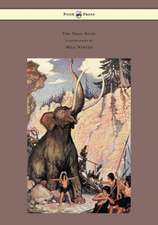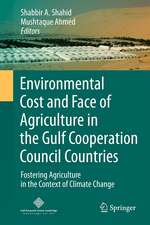The Land of Little Rain
Autor Mary Austinen Limba Engleză Paperback – 3 feb 2010
| Toate formatele și edițiile | Preț | Express |
|---|---|---|
| Paperback (17) | 26.81 lei 3-5 săpt. | |
| Dover Publications – 15 dec 2015 | 26.81 lei 3-5 săpt. | |
| CREATESPACE – | 49.09 lei 3-5 săpt. | |
| CreateSpace Independent Publishing Platform – | 64.79 lei 3-5 săpt. | |
| – | 78.79 lei 3-5 săpt. | |
| – | 81.76 lei 3-5 săpt. | |
| Sunstone Press – 28 feb 2007 | 149.29 lei 3-5 săpt. | |
| Outlook Verlag – 24 sep 2019 | 165.05 lei 3-5 săpt. | |
| Echo Library – 31 iul 2006 | 62.82 lei 38-44 zile | |
| Applewood Books – 31 aug 2000 | 66.40 lei 6-8 săpt. | |
| 1st World Library – | 72.15 lei 6-8 săpt. | |
| COSIMO CLASSICS – 30 iun 2009 | 87.59 lei 6-8 săpt. | |
| Book Jungle – 3 feb 2010 | 90.02 lei 6-8 săpt. | |
| Penguin Books – 31 ian 1997 | 91.15 lei 6-8 săpt. | |
| Simon & Brown – 10 noi 2018 | 95.72 lei 38-44 zile | |
| Simon & Brown – 22 oct 2018 | 95.77 lei 38-44 zile | |
| Modern Library – 30 iun 2003 | 105.16 lei 6-8 săpt. | |
| Alpha Editions – 20 iul 2019 | 118.42 lei 6-8 săpt. | |
| Hardback (4) | 150.70 lei 38-44 zile | |
| Outlook Verlag – 24 sep 2019 | 316.38 lei 3-5 săpt. | |
| Simon & Brown – 22 oct 2018 | 150.70 lei 38-44 zile | |
| Simon & Brown – 11 noi 2018 | 165.17 lei 38-44 zile | |
| 1st World Library – | 171.98 lei 6-8 săpt. |
Preț: 90.02 lei
Nou
Puncte Express: 135
Preț estimativ în valută:
17.23€ • 18.04$ • 14.28£
17.23€ • 18.04$ • 14.28£
Carte tipărită la comandă
Livrare economică 08-22 aprilie
Preluare comenzi: 021 569.72.76
Specificații
ISBN-13: 9781438536590
ISBN-10: 1438536593
Pagini: 98
Dimensiuni: 191 x 235 x 5 mm
Greutate: 0.18 kg
Editura: Book Jungle
ISBN-10: 1438536593
Pagini: 98
Dimensiuni: 191 x 235 x 5 mm
Greutate: 0.18 kg
Editura: Book Jungle
Notă biografică
Mary Austin (nee Hunter) was born in Carlinville, Illinois in 1868 and died in Santa Fe, New Mexico in 1934. After graduation from Blackburn College, she moved with her family to California. She later spent time in New York and eventually settled in Santa Fe. A prolific writer, she wrote novels, short stories, essays, plays and poetry. Austin became an early advocate for environmental issues as well as the rights of women and other minority groups. She was particularly interested in the preservation of American Indian culture. Her books include "The Land of Little Rain," "Earth Horizon," "The Land of Journeys' Ending," and "The American Rhythm," all available in new editions from Sunstone Press.
Descriere
Descriere de la o altă ediție sau format:
A stunning tribute to the savage beauty of the area known as Death Valley. To most travelers it is a parched, empty territory, unwelcoming and forgiving. In a collection of essays that date back almost a century, naturalist and writer Mary Austin (1868-1934) breathes life into the desert landscape, describing its savage beauty, its plants and animals, and the occasional human visitor.
A stunning tribute to the savage beauty of the area known as Death Valley. To most travelers it is a parched, empty territory, unwelcoming and forgiving. In a collection of essays that date back almost a century, naturalist and writer Mary Austin (1868-1934) breathes life into the desert landscape, describing its savage beauty, its plants and animals, and the occasional human visitor.
Cuprins
Introduction by Terry Tempest Williams
THE LAND OF LITTLE RAIN
The Land of Little Rain
Water Trails of the Ceriso
The Scavengers
The Pocket Hunter
Shoshone Land
Jimville - A Bret Harte Town
My Neighbor's Field
The Mesa Trail
The Basket Maker
The Streets of the Mountains
Water Borders
Other Water Borders
Nurslings of the Sky
The Little Town of the Grape Vines
THE LAND OF LITTLE RAIN
The Land of Little Rain
Water Trails of the Ceriso
The Scavengers
The Pocket Hunter
Shoshone Land
Jimville - A Bret Harte Town
My Neighbor's Field
The Mesa Trail
The Basket Maker
The Streets of the Mountains
Water Borders
Other Water Borders
Nurslings of the Sky
The Little Town of the Grape Vines
Extras
The Land of Little Rain East
away from the Sierras, south from Panamint and Amargosa, east and south many an uncounted mile, is the Country of Lost Borders.
Ute, Paiute, Mojave, and Shoshone inhabit its frontiers, and as far into the heart of it as a man dare go. Not the law, but the land sets the limit. Desert is the name it wears upon the maps, but the Indian’s is the better word. Desert is a loose term to indicate land that supports no man; whether the land can be bitted and broken to that purpose is not proven. Void of life it never is, however dry the air and villainous the soil.
This is the nature of that country. There are hills, rounded, blunt, burned, squeezed up out of chaos, chrome and vermilion painted, aspiring to the snow-line. Between the hills lie high level-looking plains full of intolerable sun glare, or narrow valleys drowned in a blue haze. The hill surface is streaked with ash drift and black, unweathered lava flows. After rains water accumulates in the hollows of small closed valleys, and, evaporating, leaves hard dry levels of pure desertness that get the local name of dry lakes. Where the mountains are steep and the rains heavy, the pool is never quite dry, but dark and bitter, rimmed about with the efflorescence of alkaline deposits. A thin crust of it lies along the marsh over the vegetating area, which has neither beauty nor freshness. In the broad wastes open to the wind the sand drifts in hummocks about the stubby shrubs, and between them the soil shows saline traces. The sculpture of the hills here is more wind than water work, though the quick storms do sometimes scar them past many a year’s redeeming. In all the western desert edges there are essays in miniature at the famed, terrible Grand Cañon, to which, if you keep on long enough in this country, you will come at last.
Since this is a hill country one expects to find springs, but not to depend upon them; for when found they are often brackish and unwholesome, or maddening, slow dribbles in a thirsty soil. Here you find the hot sink of Death Valley, or high rolling districts where the air has always a tang of frost. Here are the long heavy winds and breathless calms on the tilted mesas where dust devils dance, whirling up into a wide, pale sky. Here you have no rain when all the earth cries for it, or quick downpours called cloud-bursts for violence. A land of lost rivers, with little in it to love; yet a land that once visited must be come back to inevitably. If it were not so there would be little told of it.
This is the country of three seasons. From June on to Novem- ber it lies hot, still, and unbearable, sick with violent unrelieving storms; then on until April, chill, quiescent, drinking its scant rain and scanter snows; from April to the hot season again, blossoming, radiant, and seductive. These months are only approximate; later or earlier the rain-laden wind may drift up the water gate of the Colorado from the Gulf, and the land sets its seasons by the rain.
The desert floras shame us with their cheerful adaptations to the seasonal limitations. Their whole duty is to flower and fruit, and they do it hardly, or with tropical luxuriance, as the rain admits. It is recorded in the report of the Death Valley expedition that after a year of abundant rains, on the Colorado desert was found a specimen of Amaranthus ten feet high. A year later the same species in the same place matured in the drought at four inches. One hopes the land may breed like qualities in her human offspring, not tritely to “try,” but to do. Seldom does the desert herb attain the full stature of the type. Extreme aridity and extreme altitude have the same dwarfing effect, so that we find in the high Sierras and in Death Valley related species in miniature that reach a comely growth in mean temperatures. Very fertile are the desert plants in expedients to prevent evaporation, turning their foliage edgewise toward the sun, growing silky hairs, exuding viscid gum. The wind, which has a long sweep, harries and helps them. It rolls up dunes about the stocky stems, encompassing and protective, and above the dunes, which may be, as with the mesquite, three times as high as a man, the blossoming twigs flourish and bear fruit.
There are many areas in the desert where drinkable water lies within a few feet of the surface, indicated by the mesquite and the bunch grass (Sporobolus airoides). It is this nearness of unimagined help that makes the tragedy of desert deaths. It is related that the final breakdown of that hapless party that gave Death Valley its forbidding name occurred in a locality where shallow wells would have saved them. But how were they to know that? Properly equipped it is possible to go safely across that ghastly sink, yet every year it takes its toll of death, and yet men find there sun-dried mummies, of whom no trace or recollection is preserved. To underestimate one’s thirst, to pass a given landmark to the right or left, to find a dry spring where one looked for running water—there is no help for any of these things.
Along springs and sunken watercourses one is surprised to find such water-loving plants as grow widely in moist ground, but the true desert breeds its own kind, each in its particular habitat. The angle of the slope, the frontage of a hill, the structure of the soil determines the plant. South-looking hills are nearly bare, and the lower tree-line higher here by a thousand feet. Cañons running east and west will have one wall naked and one clothed. Around dry lakes and marshes the herbage preserves a set and orderly arrangement. Most species have well-defined areas of growth, the best index the voiceless land can give the traveler of his whereabouts.
If you have any doubt about it, know that the desert begins with the creosote. This immortal shrub spreads down into Death Valley and up to the lower timber-line, odorous and medicinal as you might guess from the name, wandlike, with shining fretted foliage. Its vivid green is grateful to the eye in a wilderness of gray and greenish white shrubs. In the spring it exudes a resinous gum which the Indians of those parts know how to use with pulverized rock for cementing arrow points to shafts. Trust Indians not to miss any virtues of the plant world!
Nothing the desert produces expresses it better than the unhappy growth of the tree yuccas. Tormented, thin forests of it stalk drearily in the high mesas, particularly in that triangular slip that fans out eastward from the meeting of the Sierras and coastwise hills where the first swings across the southern end of the San Joaquin Valley. The yucca bristles with bayonet-pointed leaves, dull green, growing shaggy with age, tipped with panicles of fetid, greenish bloom. After death, which is slow, the ghostly hollow network of its woody skeleton, with hardly power to rot, makes the moonlight fearful. Before the yucca has come to flower, while yet its bloom is a creamy cone-shaped bud of the size of a small cabbage, full of sugary sap, the Indians twist it deftly out of its fence of daggers and roast it for their own delectation. So it is that in those parts where man inhabits one sees young plants of Yucca arborensis infrequently. Other yuccas, cacti, low herbs, a thousand sorts, one finds journeying east from the coastwise hills. There is neither poverty of soil nor species to account for the sparseness of desert growth, but simply that each plant requires more room. So much earth must be preëmpted to extract so much moisture. The real struggle for existence, the real brain of the plant, is underground; above there is room for a rounded perfect growth. In Death Valley, reputed the very core of desolation, are nearly two hundred identified species.
Above the lower tree-line, which is also the snow-line, mapped out abruptly by the sun, one finds spreading growth of piñon, juniper, branched nearly to the ground, lilac and sage, and scattering white pines.
There is no special preponderance of self-fertilized or wind-fertilized plants, but everywhere the demand for and evidence of insect life. Now where there are seeds and insects there will be birds and small mammals, and where these are, will come the slinking, sharp-toothed kind that prey on them. Go as far as you dare in the heart of a lonely land, you cannot go so far that life and death are not before you. Painted lizards slip in and out of rock crevices, and pant on the white hot sands. Birds, hummingbirds even, nest in the cactus scrub; woodpeckers befriend the demoniac yuccas; out of the stark, treeless waste rings the music of the night-singing mockingbird. If it be summer and the sun well down, there will be a burrowing owl to call. Strange, furry, tricksy things dart across the open places, or sit motionless in the conning towers of the creosote. The poet may have “named all the birds without a gun,” but not the fairy-footed, ground-inhabiting, furtive, small folk of the rainless regions. They are too many and too swift; how many you would not believe without seeing the footprint tracings in the sand. They are nearly all night workers, finding the days too hot and white. In mid-desert where there are no cattle, there are no birds of carrion, but if you go far in that direction the chances are that you will find yourself shadowed by their tilted wings. Nothing so large as a man can move unspied upon in that country, and they know well how the land deals with strangers. There are hints to be had here of the way in which a land forces new habits on its dwellers. The quick increase of suns at the end of spring sometimes overtakes birds in their nesting and effects a reversal of the ordinary manner of incubation. It becomes necessary to keep eggs cool rather than warm. One hot, stifling spring in the Little Antelope I had occa- sion to pass and repass frequently the nest of a pair of meadowlarks, located unhappily in the shelter of a very slender weed. I never caught them sitting except near night, but at midday they stood, or drooped above it, half fainting with pitifully parted bills, between their treasure and the sun. Sometimes both of them together with wings spread and half lifted continued a spot of shade in a temperature that constrained me at last in a fellow feeling to spare them a bit of canvas for permanent shelter. There was a fence in that country shutting in a cattle range, and along its fifteen miles of posts one could be sure of finding a bird or two in every strip of shadow; sometimes the sparrow and the hawk, with wings trailed and beaks parted, drooping in the white truce of noon.
If one is inclined to wonder at first how so many dwellers came to be in the loneliest land that ever came out of God’s hands, what they do there and why stay, one does not wonder so much after having lived there. None other than this long brown land lays such a hold on the affections. The rainbow hills, the tender bluish mists, the luminous radiance of the spring, have the lotus charm. They trick the sense of time, so that once inhabiting there you always mean to go away without quite realizing that you have not done it. Men who have lived there, miners and cattle-men, will tell you this, not so fluently, but emphatically, cursing the land and going back to it. For one thing there is the divinest, cleanest air to be breathed anywhere in God’s world. Some day the world will understand that, and the little oases on the windy tops of hills will harbor for healing its ailing, house-weary broods. There is promise there of great wealth in ores and earths, which is no wealth by reason of being so far removed from water and workable conditions, but men are bewitched by it and tempted to try the impossible.
You should hear Salty Williams tell how he used to drive eighteen and twenty-mule teams from the borax marsh to Mojave, ninety miles, with the trail wagon full of water barrels. Hot days the mules would go so mad for drink that the clank of the water bucket set them into an uproar of hideous, maimed noises, and a tangle of harness chains, while Salty would sit on the high seat with the sun glare heavy in his eyes, dealing out curses of pacification in a level, uninterested voice until the clamor fell off from sheer exhaustion. There was a line of shallow graves along that road; they used to count on dropping a man or two of every new gang of coolies brought out in the hot season. But when he lost his swamper, smitten without warning at the noon halt, Salty quit his job; he said it was “too durn hot.” The swamper he buried by the way with stones upon him to keep the coyotes from digging him up, and seven years later I read the penciled lines on the pine headboard, still bright and unweathered.
But before that, driving up on the Mojave stage, I met Salty again crossing Indian Wells, his face from the high seat, tanned and ruddy as a harvest moon, looming through the golden dust above his eighteen mules. The land had called him.
The palpable sense of mystery in the desert air breeds fables, chiefly of lost treasure. Somewhere within its stark borders, if one believes report, is a hill strewn with nuggets; one seamed with virgin silver; an old clayey water-bed where Indians scooped up earth to make cooking pots and shaped them reeking with grains of pure gold. Old miners drifting about the desert edges, weathered into the semblance of the tawny hills, will tell you tales like these convincingly. After a little sojourn in that land you will believe them on their own account. It is a question whether it is not better to be bitten by the little horned snake of the desert that goes sidewise and strikes without coiling, than by the tradition of a lost mine.
And yet—and yet—is it not perhaps to satisfy expectation that one falls into the tragic key in writing of desertness? The more you wish of it the more you get, and in the mean time lose much of pleasantness. In that country which begins at the foot of the east slope of the Sierras and spreads out by less and less lofty hill ranges toward the Great Basin, it is possible to live with great zest, to have red blood and delicate joys, to pass and repass about one’s daily performance an area that would make an Atlantic seaboard State, and that with no peril, and, according to our way of thought, no particular difficulty. At any rate, it was not people who went into the desert merely to write it up who invented the fabled Hassaympa, of whose waters, if any drink, they can no more see fact as naked fact, but all radiant with the color of romance. I, who must have drunk of it in my twice seven years’ wanderings, am assured that it is worth while.
For all the toll the desert takes of a man it gives compensations, deep breaths, deep sleep, and the communion of the stars. It comes upon one with new force in the pauses of the night that the Chaldeans were a desert-bred people. It is hard to escape the sense of mastery as the stars move in the wide clear heavens to risings and settings unobscured. They look large and near and palpitant; as if they moved on some stately service not needful to declare. Wheeling to their stations in the sky, they make the poor world-fret of no account. Of no account you who lie out there watching, nor the lean coyote that stands off in the scrub from you and howls and howls.
away from the Sierras, south from Panamint and Amargosa, east and south many an uncounted mile, is the Country of Lost Borders.
Ute, Paiute, Mojave, and Shoshone inhabit its frontiers, and as far into the heart of it as a man dare go. Not the law, but the land sets the limit. Desert is the name it wears upon the maps, but the Indian’s is the better word. Desert is a loose term to indicate land that supports no man; whether the land can be bitted and broken to that purpose is not proven. Void of life it never is, however dry the air and villainous the soil.
This is the nature of that country. There are hills, rounded, blunt, burned, squeezed up out of chaos, chrome and vermilion painted, aspiring to the snow-line. Between the hills lie high level-looking plains full of intolerable sun glare, or narrow valleys drowned in a blue haze. The hill surface is streaked with ash drift and black, unweathered lava flows. After rains water accumulates in the hollows of small closed valleys, and, evaporating, leaves hard dry levels of pure desertness that get the local name of dry lakes. Where the mountains are steep and the rains heavy, the pool is never quite dry, but dark and bitter, rimmed about with the efflorescence of alkaline deposits. A thin crust of it lies along the marsh over the vegetating area, which has neither beauty nor freshness. In the broad wastes open to the wind the sand drifts in hummocks about the stubby shrubs, and between them the soil shows saline traces. The sculpture of the hills here is more wind than water work, though the quick storms do sometimes scar them past many a year’s redeeming. In all the western desert edges there are essays in miniature at the famed, terrible Grand Cañon, to which, if you keep on long enough in this country, you will come at last.
Since this is a hill country one expects to find springs, but not to depend upon them; for when found they are often brackish and unwholesome, or maddening, slow dribbles in a thirsty soil. Here you find the hot sink of Death Valley, or high rolling districts where the air has always a tang of frost. Here are the long heavy winds and breathless calms on the tilted mesas where dust devils dance, whirling up into a wide, pale sky. Here you have no rain when all the earth cries for it, or quick downpours called cloud-bursts for violence. A land of lost rivers, with little in it to love; yet a land that once visited must be come back to inevitably. If it were not so there would be little told of it.
This is the country of three seasons. From June on to Novem- ber it lies hot, still, and unbearable, sick with violent unrelieving storms; then on until April, chill, quiescent, drinking its scant rain and scanter snows; from April to the hot season again, blossoming, radiant, and seductive. These months are only approximate; later or earlier the rain-laden wind may drift up the water gate of the Colorado from the Gulf, and the land sets its seasons by the rain.
The desert floras shame us with their cheerful adaptations to the seasonal limitations. Their whole duty is to flower and fruit, and they do it hardly, or with tropical luxuriance, as the rain admits. It is recorded in the report of the Death Valley expedition that after a year of abundant rains, on the Colorado desert was found a specimen of Amaranthus ten feet high. A year later the same species in the same place matured in the drought at four inches. One hopes the land may breed like qualities in her human offspring, not tritely to “try,” but to do. Seldom does the desert herb attain the full stature of the type. Extreme aridity and extreme altitude have the same dwarfing effect, so that we find in the high Sierras and in Death Valley related species in miniature that reach a comely growth in mean temperatures. Very fertile are the desert plants in expedients to prevent evaporation, turning their foliage edgewise toward the sun, growing silky hairs, exuding viscid gum. The wind, which has a long sweep, harries and helps them. It rolls up dunes about the stocky stems, encompassing and protective, and above the dunes, which may be, as with the mesquite, three times as high as a man, the blossoming twigs flourish and bear fruit.
There are many areas in the desert where drinkable water lies within a few feet of the surface, indicated by the mesquite and the bunch grass (Sporobolus airoides). It is this nearness of unimagined help that makes the tragedy of desert deaths. It is related that the final breakdown of that hapless party that gave Death Valley its forbidding name occurred in a locality where shallow wells would have saved them. But how were they to know that? Properly equipped it is possible to go safely across that ghastly sink, yet every year it takes its toll of death, and yet men find there sun-dried mummies, of whom no trace or recollection is preserved. To underestimate one’s thirst, to pass a given landmark to the right or left, to find a dry spring where one looked for running water—there is no help for any of these things.
Along springs and sunken watercourses one is surprised to find such water-loving plants as grow widely in moist ground, but the true desert breeds its own kind, each in its particular habitat. The angle of the slope, the frontage of a hill, the structure of the soil determines the plant. South-looking hills are nearly bare, and the lower tree-line higher here by a thousand feet. Cañons running east and west will have one wall naked and one clothed. Around dry lakes and marshes the herbage preserves a set and orderly arrangement. Most species have well-defined areas of growth, the best index the voiceless land can give the traveler of his whereabouts.
If you have any doubt about it, know that the desert begins with the creosote. This immortal shrub spreads down into Death Valley and up to the lower timber-line, odorous and medicinal as you might guess from the name, wandlike, with shining fretted foliage. Its vivid green is grateful to the eye in a wilderness of gray and greenish white shrubs. In the spring it exudes a resinous gum which the Indians of those parts know how to use with pulverized rock for cementing arrow points to shafts. Trust Indians not to miss any virtues of the plant world!
Nothing the desert produces expresses it better than the unhappy growth of the tree yuccas. Tormented, thin forests of it stalk drearily in the high mesas, particularly in that triangular slip that fans out eastward from the meeting of the Sierras and coastwise hills where the first swings across the southern end of the San Joaquin Valley. The yucca bristles with bayonet-pointed leaves, dull green, growing shaggy with age, tipped with panicles of fetid, greenish bloom. After death, which is slow, the ghostly hollow network of its woody skeleton, with hardly power to rot, makes the moonlight fearful. Before the yucca has come to flower, while yet its bloom is a creamy cone-shaped bud of the size of a small cabbage, full of sugary sap, the Indians twist it deftly out of its fence of daggers and roast it for their own delectation. So it is that in those parts where man inhabits one sees young plants of Yucca arborensis infrequently. Other yuccas, cacti, low herbs, a thousand sorts, one finds journeying east from the coastwise hills. There is neither poverty of soil nor species to account for the sparseness of desert growth, but simply that each plant requires more room. So much earth must be preëmpted to extract so much moisture. The real struggle for existence, the real brain of the plant, is underground; above there is room for a rounded perfect growth. In Death Valley, reputed the very core of desolation, are nearly two hundred identified species.
Above the lower tree-line, which is also the snow-line, mapped out abruptly by the sun, one finds spreading growth of piñon, juniper, branched nearly to the ground, lilac and sage, and scattering white pines.
There is no special preponderance of self-fertilized or wind-fertilized plants, but everywhere the demand for and evidence of insect life. Now where there are seeds and insects there will be birds and small mammals, and where these are, will come the slinking, sharp-toothed kind that prey on them. Go as far as you dare in the heart of a lonely land, you cannot go so far that life and death are not before you. Painted lizards slip in and out of rock crevices, and pant on the white hot sands. Birds, hummingbirds even, nest in the cactus scrub; woodpeckers befriend the demoniac yuccas; out of the stark, treeless waste rings the music of the night-singing mockingbird. If it be summer and the sun well down, there will be a burrowing owl to call. Strange, furry, tricksy things dart across the open places, or sit motionless in the conning towers of the creosote. The poet may have “named all the birds without a gun,” but not the fairy-footed, ground-inhabiting, furtive, small folk of the rainless regions. They are too many and too swift; how many you would not believe without seeing the footprint tracings in the sand. They are nearly all night workers, finding the days too hot and white. In mid-desert where there are no cattle, there are no birds of carrion, but if you go far in that direction the chances are that you will find yourself shadowed by their tilted wings. Nothing so large as a man can move unspied upon in that country, and they know well how the land deals with strangers. There are hints to be had here of the way in which a land forces new habits on its dwellers. The quick increase of suns at the end of spring sometimes overtakes birds in their nesting and effects a reversal of the ordinary manner of incubation. It becomes necessary to keep eggs cool rather than warm. One hot, stifling spring in the Little Antelope I had occa- sion to pass and repass frequently the nest of a pair of meadowlarks, located unhappily in the shelter of a very slender weed. I never caught them sitting except near night, but at midday they stood, or drooped above it, half fainting with pitifully parted bills, between their treasure and the sun. Sometimes both of them together with wings spread and half lifted continued a spot of shade in a temperature that constrained me at last in a fellow feeling to spare them a bit of canvas for permanent shelter. There was a fence in that country shutting in a cattle range, and along its fifteen miles of posts one could be sure of finding a bird or two in every strip of shadow; sometimes the sparrow and the hawk, with wings trailed and beaks parted, drooping in the white truce of noon.
If one is inclined to wonder at first how so many dwellers came to be in the loneliest land that ever came out of God’s hands, what they do there and why stay, one does not wonder so much after having lived there. None other than this long brown land lays such a hold on the affections. The rainbow hills, the tender bluish mists, the luminous radiance of the spring, have the lotus charm. They trick the sense of time, so that once inhabiting there you always mean to go away without quite realizing that you have not done it. Men who have lived there, miners and cattle-men, will tell you this, not so fluently, but emphatically, cursing the land and going back to it. For one thing there is the divinest, cleanest air to be breathed anywhere in God’s world. Some day the world will understand that, and the little oases on the windy tops of hills will harbor for healing its ailing, house-weary broods. There is promise there of great wealth in ores and earths, which is no wealth by reason of being so far removed from water and workable conditions, but men are bewitched by it and tempted to try the impossible.
You should hear Salty Williams tell how he used to drive eighteen and twenty-mule teams from the borax marsh to Mojave, ninety miles, with the trail wagon full of water barrels. Hot days the mules would go so mad for drink that the clank of the water bucket set them into an uproar of hideous, maimed noises, and a tangle of harness chains, while Salty would sit on the high seat with the sun glare heavy in his eyes, dealing out curses of pacification in a level, uninterested voice until the clamor fell off from sheer exhaustion. There was a line of shallow graves along that road; they used to count on dropping a man or two of every new gang of coolies brought out in the hot season. But when he lost his swamper, smitten without warning at the noon halt, Salty quit his job; he said it was “too durn hot.” The swamper he buried by the way with stones upon him to keep the coyotes from digging him up, and seven years later I read the penciled lines on the pine headboard, still bright and unweathered.
But before that, driving up on the Mojave stage, I met Salty again crossing Indian Wells, his face from the high seat, tanned and ruddy as a harvest moon, looming through the golden dust above his eighteen mules. The land had called him.
The palpable sense of mystery in the desert air breeds fables, chiefly of lost treasure. Somewhere within its stark borders, if one believes report, is a hill strewn with nuggets; one seamed with virgin silver; an old clayey water-bed where Indians scooped up earth to make cooking pots and shaped them reeking with grains of pure gold. Old miners drifting about the desert edges, weathered into the semblance of the tawny hills, will tell you tales like these convincingly. After a little sojourn in that land you will believe them on their own account. It is a question whether it is not better to be bitten by the little horned snake of the desert that goes sidewise and strikes without coiling, than by the tradition of a lost mine.
And yet—and yet—is it not perhaps to satisfy expectation that one falls into the tragic key in writing of desertness? The more you wish of it the more you get, and in the mean time lose much of pleasantness. In that country which begins at the foot of the east slope of the Sierras and spreads out by less and less lofty hill ranges toward the Great Basin, it is possible to live with great zest, to have red blood and delicate joys, to pass and repass about one’s daily performance an area that would make an Atlantic seaboard State, and that with no peril, and, according to our way of thought, no particular difficulty. At any rate, it was not people who went into the desert merely to write it up who invented the fabled Hassaympa, of whose waters, if any drink, they can no more see fact as naked fact, but all radiant with the color of romance. I, who must have drunk of it in my twice seven years’ wanderings, am assured that it is worth while.
For all the toll the desert takes of a man it gives compensations, deep breaths, deep sleep, and the communion of the stars. It comes upon one with new force in the pauses of the night that the Chaldeans were a desert-bred people. It is hard to escape the sense of mastery as the stars move in the wide clear heavens to risings and settings unobscured. They look large and near and palpitant; as if they moved on some stately service not needful to declare. Wheeling to their stations in the sky, they make the poor world-fret of no account. Of no account you who lie out there watching, nor the lean coyote that stands off in the scrub from you and howls and howls.
Recenzii
“Mary Austin was a poet, a pioneer, and a patriot.” —Terry Tempest Williams

























